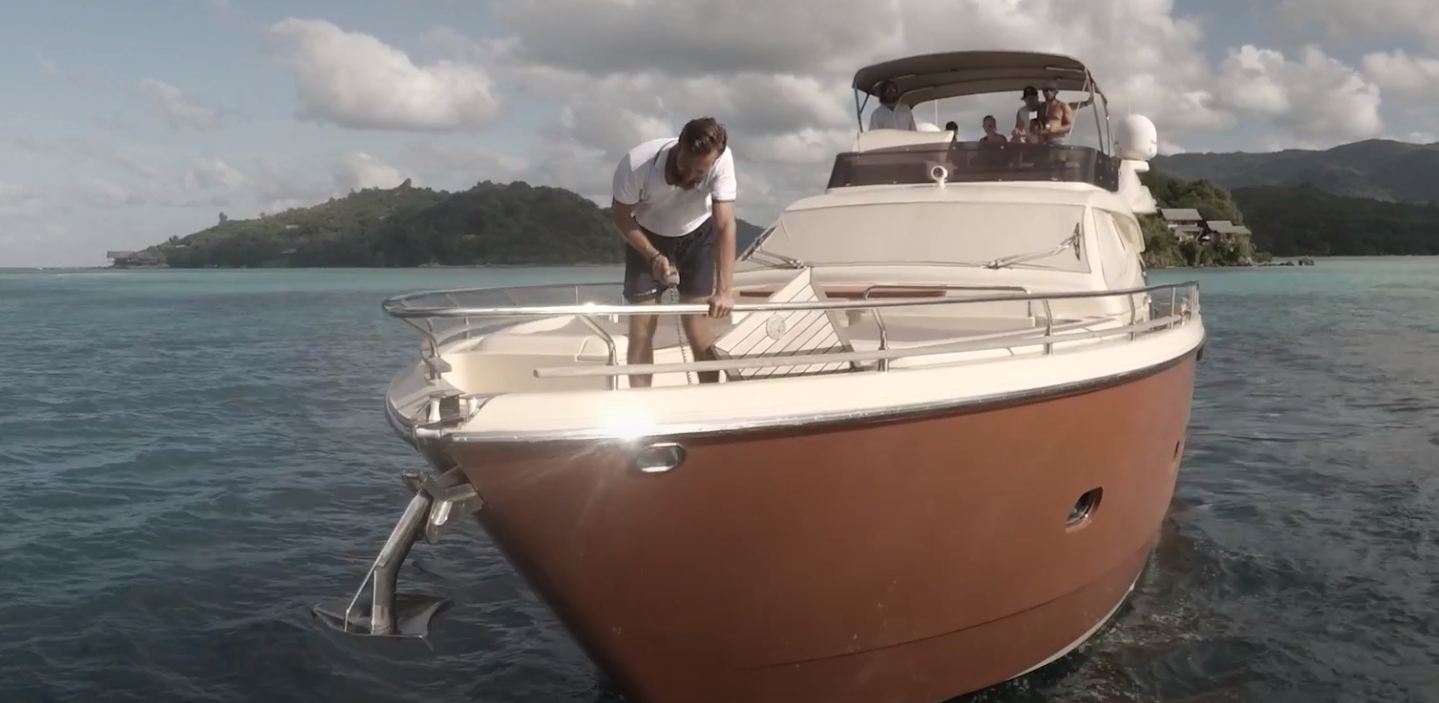Symbol of reliability and stability is an Anchor! It has become an embodiment of steadiness and stability. Safety and control are main features of the anchor, when talking about vessel navigation. Having an anchor on any types of vessels is a mandatory requirement of all the regulations of international and domestic vessel navigation.
According to the norms of leading marine states - small size crafts should be provided with two anchors:
Main: attached at the bow section of the yacht or pleasure boat and serves as the main device for ensuring secure and safe anchor mooring in any kind of navigational circumstances and conditions
Spare: extra anchor, located on the stern of the vessel, it serves as additional anchoring for difficult and poor grip seafloors
In addition, yacht equipment can include a third anchor (spare one). It is used in case the main or spare one are lost. Most skippers don’t mind having it at the bottom of their trunk or cargo hold. Useful thing!
Main requirements for yacht anchors:
- Steadily setting a vessel at an anchor hold;
- Good construction “grip” of an anchor;
- Convenient release of an anchor from seafloor while weighing the anchor;
- Optimal weight and size of the anchor, which is suitable for a maximum lifting capacity of the anchor winch and easy transportation;
- Reliability and durability of anchor materials + anti-salt and anti-corrosive coating.
According to a field of use anchors are divided into:
- “Bow anchor” (main): purpose - to ensure a steady setting of a vessel at an anchor hold;
- “Stern anchor” (second anchor) purpose - its a safety spare anchor. It prevents a vessel from swinging around the main anchor chain
- “Dead weight anchor” (fixed anchor) purpose - fixed mooring of a dead weight at the sea bed for a temporary mooring of vessels to a floating anchorage buoy;
- “Floating anchor” (manoeuvring anchor) purpose - floating structure of the anchor allows ship hull manoeuvring, it's used for mooring and storm surge resistance. It is possible to use it for other vessel navigation purposes.

Main types of anchors: construction typology
Reliability and optimal structure of anchors are time-proved. Modern yacht anchors are not an exception. Their shape and technical features were being refined for centuries on larger and more heavy-weight vessels. Nowadays yacht anchors are a masterpiece of technical design and functional minimalism! They are small-sized and lightweight, but have a good “grip” and durability, compared to their precursors. But modern and past principles and requirements for anchors are the same: steadily setting a vessel at an anchor hold and have small size which is not interfering with vessel navigation.
Choosing an anchor: rational approach
Before choosing an optimal anchor for a certain yacht, it is necessary to think carefully and give a clear answer to the following questions:
- In what type of sea floors the anchor will be used: sandy, oozy or gravel and rocky?
- What type of climatic and water conditions will affect the anchor usage: seasonal winds, underwater currents, sea floor freezing?
First of all it is necessary to decide on the optimal anchor weight. How to do it? There are two simple methods for calculating the necessary weight:
- Main calculation unit is such vessel feature as “Displacement”. Optimal anchor weight is 10% from the vessel displacement;
- Another calculation unit is the length of the vessel: in this case optimal anchor weight equals to 0.1% from the length of the vessel.
When determining the anchor weight it is necessary to consider not only these basic calculations. There is more to this than meets the eye! It is important to consider such additional factors as sea floor characteristics, sea bottom drops of depths. With favorable sea floor factors, for example, with oozy and shingly sea floor anchor will have a good deep grip, but with rocky sea floor or rock surface its weight can be insufficient for resisting yacht’s drift or steady anchor mooring. What can be done? It’s simple - add some weight to a future anchor, but not too much, as it can become too heavy! Consider anchor winch capacity and size of the anchor chain.

Yacht anchors: main types
- “Admiralty anchor”: is marine anchors classics. It is familiar from plenty of marine-themed images. It is great both on large-capacity vessels and on museum pieces. Its efficiency is directly linked to its size and weight, therefore this type is not appropriate for yachts and small size crafts.
- “Matrosov anchor”: having the same weight with the Admiralty anchor, but its anchor holding efficiency is four-five times higher! It’s used on large-capacity yachts.
- “Danforth anchor”: is a popular type for a main (bow anchor) in the yacht. Holding power: up to 50 kg per each kilogram of anchors weight. It’s really great for small sized yachts and cabin boats.
- “Grapnel”: foldable structure of this anchor with a holding power up to 400 kg allows to use these anchors as spare ones or main ones for tender boats. Foldable structure and small size make grapnel a preferable solution for support or secondary tasks of vessel navigation.
- “Plow anchor”: is the most popular modern anchor! A lot of yachtsmen are using it, it’s recommended to purchase it as a main anchor. Excellent balancing, good grip to sea floor, its weight and size are optimal for yacht usage. With a huge variety of different modifications from various manufacturers, any plow anchor is a good choice for an experienced or beginner skipper!
All in all, we need to say that choosing an anchor is a crucial issue. It requires a meaningful approach and a clear understanding of tasks and goals, which the anchor is expected to implement. The rest depends on your experience! Good luck!